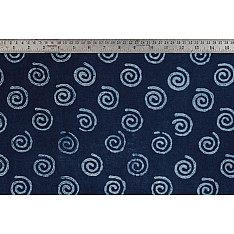- Availability: 3
- Made & Mkt by: Gaatha
- Product Code: 3732-DP-12
- Weight: 100.00g
- Dimensions: 100.00cm x 116.00cm x 0.00cm
The typical dispatch time is 2-3 days; however, in special cases, it may take longer. Please refer to the product details section for specific timelines. Once dispatched, we will share the tracking details with you.
For returns, you can file a request within 24 hours of receiving the product. If the package is damaged, please make a video while unboxing and share images of the damaged item along with your return request.
9328006304 ( WhatsApp )

From the plateaus of Madhya Pradesh, to the arid Thar Desert of Rajastha, to those of salt along the coastal lines of Arabian sea in Kutchh... she pulled a fistful of inspiration from where ever her clan moved, to embellish her ‘Odhni’ and ‘Ghagra’ with it. Champa, Dhola maru, Jalam Buta, Mirchi and Amba were her prized possessions. An icon amongst the women of the Bhil tribe, her attire was a canvas on which she tastefully arranged these motifs in compositions, collectively known as Nandna prints. The traditional motifs of the Nandana prints are therefore not necessarily influences from the flora and fauna in one locality.

Being of utmost comfort during their daily activities like farming, Nandana fabric was worn by all the women of the Bhil tribe alike. This is also a reason for the prevalence of dark colors like blue and green as backgrounds. While Champakali (a symbol of fertility) was popular amongst the unmarried women of the tribe, the skirts with Amba print were worn during marriages and also a few months following childbirth. The brothers also traditionally gifted it to the sisters on eves like Raksha bandhan, Diwali and Teej.

Block printing was practiced in places like Kukshi, Dharampuri and Thikri (Dhar district) by a group of Hindu and Mohammedan printers and dyers; the Chippas (printers) and the Nilgars (dyers). They catered to the clothing needs of the ‘Adivasis’ (native tribes). The patterns were mostly raw and coarse cotton was used. However, the printers and dyers, in their never-ending quest for ideal conditions to hone their craft kept wandering and a group is believed to have settled in the villages of Tarapur and Umedpura of Madhya Pradesh. The two villages are on two side of river Gambhiri. The mineral content of the river water in this region brought out the required richness in the colors. The craft is believed to have existed for over two hundred years here and grown to attain characteristic forms, which made it exclusive to the region.

When the fabric is immersed in Harda solution, it gives a cream-yellow color to the fabric and acts as a mordant for the alum paste.

The cloth is spread out on the ‘Mez’ or table. The printing blocks are dipped in the alum paste and then pressed onto the fabric. The fabric is then dried in the sun. The fabric is boiled in ‘Alizarin’ and ‘Dhawdi ka phool’. The Dhawdi flower keeps the red color of ‘Alizarin’ from spreading into the printed alum. After it is boiled, the fabric is taken out and dried without washing. Once the fabric dries, it is dipped into a solution of gum and water.

This helps in the color fastening. Next step is to print with mud. The mud printed areas are smeared with wood dust. This also increases the adhesive strength of the Dabu. This is a cold dyeing process where the cloth is dipped in the indigo dye solution.

Indigo is a highly revered dye among the craftsmen. They believe that a cow that drinks the solution becomes stronger and that if they eat with Indigo-stained hands, there won’t be any problems with the food or digestion. They say that Indigo has the power to turn anything
natural. Wearing Indigo dyed fabric is thereby considered auspicious.

Master craftsmen Shri Purshottam Jharia says; “The process of making Nandana is very time-consuming. It takes around a month to complete one lot of fabric (roughly 800 mts). Skilled workers with years of experience are required to carry about the processes. Many traditional methods of Nandana printing have been forgone because of their labor-intensive nature. The designs and patterns keep varying and are retained according to the market demands, which are not that particular about the manner of printing anymore.”
| Craftsmen | |
| Made by | Shri Purshottam Jharia |
| Material | |
| Made of | Cotton |
| Instruction | |
| Note | - Even though preventive treatment is done by the artisan, yet care should be taken during the first few washes as some leeching of color may occur. --The fabric is hand printed and unique, expect some variation from the shown design. |






























-225x150w.jpg)



-225x150w.jpg)
-225x150w.jpg)
-225x150w.jpg)



-225x150w.jpg)

-225x150w.jpg)









-225x150w.jpg)

-225x150w.jpg)

-225x150w.jpg)


-234x234.jpg)
-234x234.jpg)